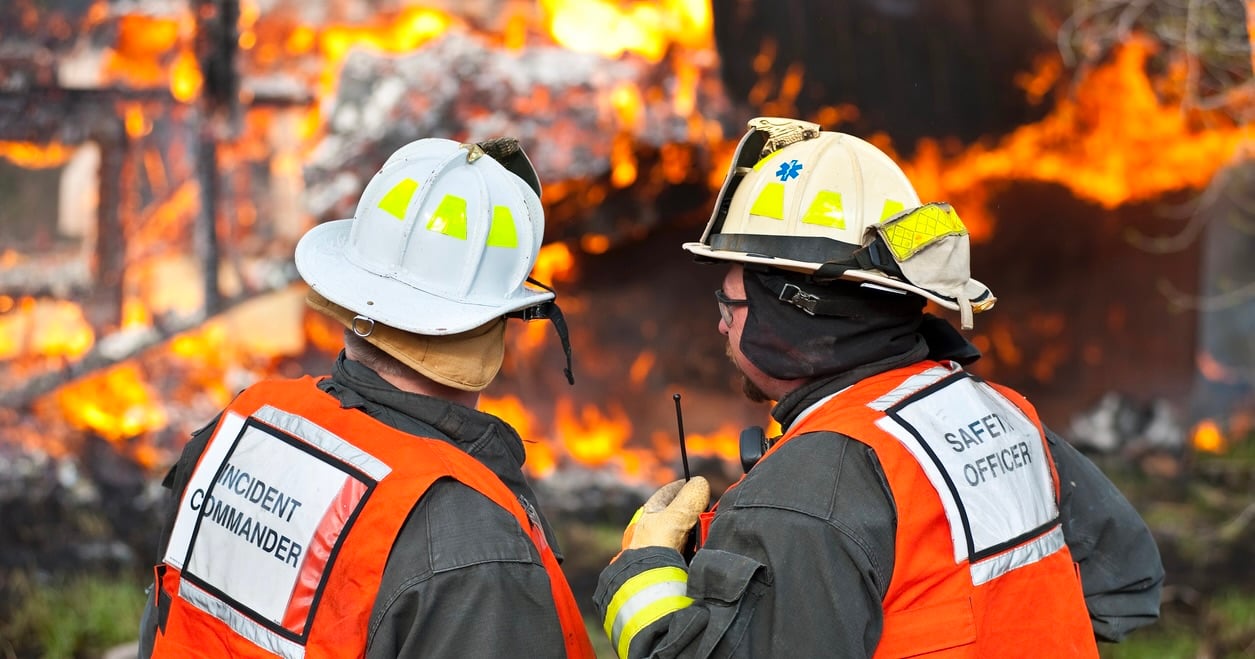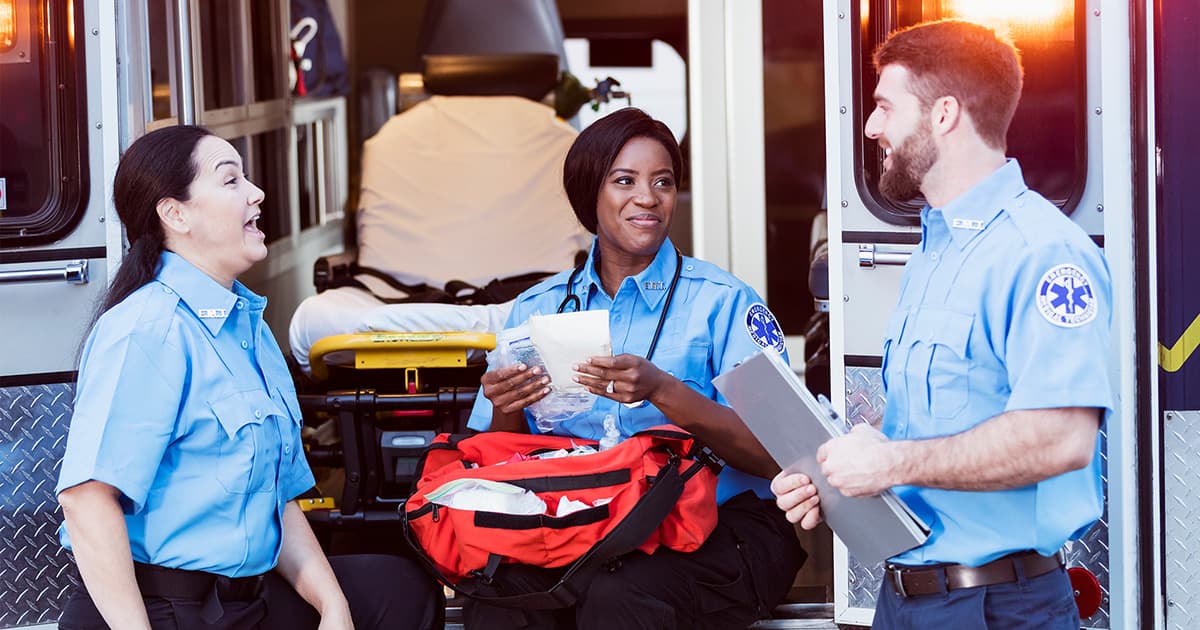Does Your Team Feel Unseen? Close the Leadership Disconnect with 2-Way Communication
Editor's Note: In July 2025, EMS1 and Fitch & Associates released their annual EMS trend survey, What Paramedics Want, proudly sponsored by Pulsara....

Editor's Note: In May 2025, FireRescue1 released their annual digital edition, Fire Command Ready: Building Bench Strength, proudly sponsored by Pulsara. Because the articles and advice found within contain such critical subject matter, we've elected to publish each segment one at a time here on our blog. Today's entry is written by Vince Bettinazzi, deputy chief of the Myrtle Beach (S.C.) Fire Department and co-host of the fire service podcast "Beyond the Stretch".
We spend solid training time preparing our members to respond to a mayday event – a downed firefighter in need of rescue. Our focus is often on the line personnel, providing training opportunities and equipment that will aid them in the event they are needed to rescue one of their own. Some organizations smartly provide training opportunities to the command officers, too – the individuals who will be the decision-makers during these incidents. We give them advice on how to handle the mayday, and give them command aid materials to guide their actions toward a successful outcome. But how would we respond if the mayday involved the incident commander (IC)?
When this question was asked of me, I had to stop to consider how the members of my department would respond to such an event. It’s a question I had honestly never thought about before. I wondered what our reflex time would be to gain control and maintain composure during a structure fire where the IC became incapacitated due to a medical emergency, for example. It also made me think about the potential impact this would have on the overall fireground operations.
Many fire departments struggle to meet the response guidelines advised by NFPA, including the presence of an IC at the scene. How departments achieve this goal varies. Some organizations have a dedicated battalion chief, while others utilize the officer on a first-arriving fire suppression apparatus. Some organizations might provide a command aid for the BC or even respond with multiple command officers.
How an organization establishes the IC role is a key factor in how they would be able to mitigate the loss of the IC. For example, consider if the agency had to remove a company officer from scene operations, rather than pass the command to another staff or command officer already on the scene. This would certainly affect both how the emergency situation is handled and how well incident scene operations continue.
Although I am specifically using the IC as the example here, there are many departments that rely on division supervisors for incident scene operations. An emergency involving one of these command positions could also have a significant impact on scene operations, especially if the supervisor is operating in an IDLH location on the fire scene.
Several factors could potentially neutralize the IC. For one, a medical issue could impact the IC, resulting in the need for emergency care. This could impact the resources on scene, similar to having a reported patient from the fire. A response resource would be required to assess, treat and potentially transport the IC to a hospital. This would take the unit out of the rotation.
Additionally, an outside distractor or uncontrolled scene could create a hazard for the IC. For example, a disgruntled bystander could engage the IC in a way that prevents the IC from performing their functions. This would likely require assistance from the police department, and may require the support of other on-scene companies to assist with controlling the issue.
Either circumstance would require the transfer of command to another individual on the fireground. Someone will have to step up and fill the void that is created when the IC is impacted. But who?
The fire service has done a better job in recent years at developing officers and training on quick establishment of command. Organizations have written policies on initiating command, and the proper way to transfer command when it is applicable. And while these procedures are practiced, the real-world reaction is a very different scene. It’s only natural for there to be confusion when the IC is suddenly unavailable and command needs to be taken back by initial-arriving officers, especially if they are already engaged in firefighting tactics.
With that in mind, let’s start by asking whether the impacted IC does a good job of announcing the emergency. Announcing issues early is constantly drilled into our firefighters’ training, but does that thought process still exist when it’s the IC who is involved? And are they lucid enough to make that announcement? In the case of a medical emergency, that might not be possible.
At a minimum, a transfer of command to another capable individual is clearly needed. In addition, a request for more resources to the incident scene is a prudent move. First, it at least informs the other members operating on the fireground that there is a serious issue involving the IC that, without intervention, could develop into a bad situation. Second, it gets more assistance to the scene, ideally a staff officer or comparable ranking officer who can take on command responsibilities.
While calling an additional alarm or requesting additional resources is the best first step to get the help you need to continue incident command, it has one drawback: time. There is going to be some reflex time for these resources to arrive on scene. So, what do we do in the meantime? During your next training session, run through these possible options to drive some discussion:
We can’t discount the potential loss of the IC due to an extenuating circumstance. Maybe your organization has discussed this possibility and has developed some guidelines to handle the event. Or maybe this article nudges you with a “never thought of that moment” like it did for me when I fielded that question. Either way, what contingency plans do you have?
Download the full digital edition: Fire Command Ready: Building Bench Strength
Vince Bettinazzi joined the Myrtle Beach (S.C.) Fire Department in 2007. He serves as a battalion chief and is assigned as a shift commander on C-Shift. Bettinazzi is a member of the department’s Ocean Rescue Team as a certified USLA lifeguard. He completed the NFA’s Managing Officer Program in 2016, and recently obtained his Chief Fire Officer Designation from CPSE. Bettinazzi is a co-host on the “Beyond the Stretch” podcast.
To learn more about maintaining operational strength and leadership during a chaotic fire event, check out the previous entry in the Fire Command Ready series: How's Your Command Bench Strength?

Editor's Note: In July 2025, EMS1 and Fitch & Associates released their annual EMS trend survey, What Paramedics Want, proudly sponsored by Pulsara....
![[PRESS RELEASE] Published Research Finds Up to 31% Faster STEMI Treatment Times in Rural Hospital Setting with Pulsara](https://www.pulsara.com/hubfs/_1_website-page-blog-assets/pulsara-hosp-teams-assign-cardio-stemi-rn-1200x701.jpg)
Published research shows how using Pulsara, alongside standardized field activation and a focus on stakeholder relationships, improves STEMI care and...

Editor's Note: In July 2025, EMS1 and Fitch & Associates released their annual EMS trend survey, What Paramedics Want, proudly sponsored by Pulsara....